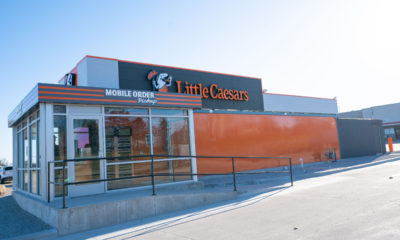Sen. Barack Obama has taken on the baby boomers. In his book, “The Audacity of Hope,” the Illinois Democrat blames our polarized political climate on that generation and says they should at last relinquish the stage to a newer, more relevant, age group.
Obama writes that Washington’s mood today is still reflective of a 1960s political style that was ideological, confrontational, inflexible, uncompromising and highly personal. You were either “us” or “them” – hawk or dove, cool or straight, “Easy Rider” or “Green Berets,” Neil Young at Woodstock or Neil Sedaka in Vegas.
It’s probably premature, however, to shuffle the boomers off to their gated retirement communities. Doesn’t the senator watch television? Or maybe he TiVos through all the commercials.
Look at an evening’s worth of TV ads! Retailers and brand marketers have paid substantially to attract those boomers. You see them all over the tube, dealing with the issues of being 50-something: arthritis, asthma, wrinkles, dentures, hair loss, weight gain, back pain, retirement planning, osteoporosis, erectile dysfunction, menopause.
This one’s trying to fit into the clothes she used to wear. That one wants to play the old saxophone he found in the attic. She wants to go to the net the way she once did. He wants to go to the hoop.
He’s constantly “on the go” because his prostate is growing. She’s worried about osteoporosis. They have high blood-pressure. Or high cholesterol. Or both.
Advertisement
Over $1 billion a year is devoted to TV advertising for Boniva, Flomax, Avodar, Cialis, Prilosec, Claritin, Cymbalta and the rest. The pharmaceutical companies used to market those prescription drugs exclusively to physicians. Today, they aim right for the consumer. And we know which age group forms the largest market for prescription drugs.
Is it any wonder that Wal-Mart, Meijer and the rest fell all over themselves to offer low-cost prescriptions? Why do you think CVS spent $21 billion to acquire Caremark RX, the prescription benefits management firm that buys drugs directly from the manufacturers and distributes them via mail-order?
Nor is it just aches, pains and acid reflux. The boomers, as portrayed in the TV ads, are also concerned about investments and retirement planning. Did they invest too little? Too much? Too late? Will old age be fun and rewarding? Will they buy that boat or invest in that winery they always wanted to have? Three out of every four commercials, it seems, is about money management and investment planning. “It’s not too late,” soothes one of the ads, “just talk to Chuck.”
The Toyota Camry remains the best-selling car in the U.S. because of the connection it made in the 1990s with boomers. Statistics show the average age of the Camry buyer has risen by one year every year. In other words, people from the same age group keep buying it.
Retailers know who spends the money. Boomers always were the ultimate consumers. They may be buying different products now but they still comprise an enormous market – not just for pharmaceuticals and financial advice, but also for food and wine (it’s the bunch, after all, that first invested in expensive espresso makers and pasta machines). Check out the average age the next time you’re at Whole Foods. It’s a rare 35-year-old mother of four buying sushi-quality yellowtail at $20 a pound or Jamaican Blue Mountain coffee.
Political consultant Chris Lehane told The New York Times that Obama would be foolish to run solely as the anti-boomer, if for no other reason than boomers – the largest generation in American history – still vote!
Advertisement
And they still buy, too, which is what American brands and retailers are counting on.
Maybe Sen. Obama is one American kid who needs to watch more television.

 Headlines1 week ago
Headlines1 week ago
 Headlines1 week ago
Headlines1 week ago
 Headlines1 week ago
Headlines1 week ago
 Designer Dozen2 weeks ago
Designer Dozen2 weeks ago
 Headlines5 days ago
Headlines5 days ago
 Headlines2 weeks ago
Headlines2 weeks ago
 Designer Dozen6 days ago
Designer Dozen6 days ago














